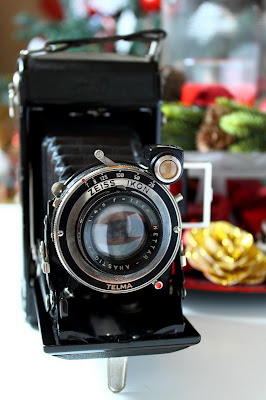Today we’re going back to basics. We’re talking about one side of the “exposure triangle,” shutter speed.
Shutter speed is, of course, how fast your shutter opens and returns to the closed position. That sounds simple, but like all things in photography, it involves much more than that. Because SLRs use a single moving mirror to allow the composing of an image through your lens, and focusing through the lens, also, that has to be factored in. In long exposures, this can lead to vibrations and shake.
The complexities that go into allowing super fast shutter speeds are too many to discuss here, but we will touch on a couple issues.
Today’s shutters are usually made of metal blades, allowing them slide behind one another and achieve faster speeds. Because they are firm, they are also more durable. Early SLRs used silk shutters, which could snag and tear, or even develop pinholes, causing a waste of entire rolls of film. Most of the SLRs you’re likely to have encountered have curtain shutters that slide up and down. On older cameras, leaf shutters were common, which allowed flash synchronization at all speeds. They generally couldn’t achieve reliable speeds above 1/500 at the top end. They also used clockwork like mechanisms to open the shutter exposing the entire shot or sensor simultaneously to whatever light was present and exposed for.
On today’s cameras, shutter speeds that are very fast do not expose the entire sensor at once. Instead, they use a pair of “curtains” that travel along the focal plane and are synchronized to create a slit of light that progresses until the entirety of the sensor has been exposed. Due to this fact, most entry-level cameras can flash synch anywhere from 1/60-1/200, with high-end dSLRs being capable of synching up to 1/250. If you use your flash at any shutter speed faster than your sync speed, you will have dark bands along part of your scene.
Each halving or doubling of your shutter speed causes a doubling or halving of the exposure to which your sensor is exposed. Most of our better modern cameras can shoot from 30 seconds to 1/8000 second, and include a bulb mode for manual exposures longer than 30 seconds.
The series of shutter speeds, in full stops goes like this:
30 seconds, 15 seconds, 8 seconds, 4 seconds, 2 seconds, 1 second, ½, ¼, 1/8, 1/15, 1/30, 1/60, 1/125, 1/250, 1/500, 1/1000, 1/2000, 1/4000, and 1/8000. Notice the halving of exposure with each change of speed.
Adding in half stops gives you:
24 seconds, 12 seconds, 6 seconds, 3 seconds, 1.5 seconds, 1/3, 1/6, 1/10, 1/20, 1/45, 1/90, 1/180, 1/350, 1/750, 1/1500, 1/3000, and 1/6000.
Finally adding in the third stop increments gives you the following series:
13 seconds, 10 seconds, 6 seconds, 5 seconds, 3 seconds, 2.5 seconds, 1.6 seconds, 1.3 seconds, .6 second, .4 second, 1/5, 1/6, 1/10, 1/13, 1/20, 1/25, 1/40, 1/50, 1/80, 1/100, 1/160, 1/200, 1/320, 1/400, 1/640, 1/800, 1/1250, 1/1600, 1/2500, 1/3200, 1/5000, and finally 1/6400.
The complete range allows for shooting in all lighting situations. They also allow for shots that will freeze even the fastest action or blur even the slightest movement. The creative potential of using your shutter speed in combination with the other sides of the triangle is limited only by your imagination. Try some motion blur, or try panning with a moving object to get the sense of motion and speed. Try to capture a hummingbird’s wings without blur. Remember, though, that every change in one side of the triangle requires a change in another side to maintain the same exposure.
Here's a photo, taken at a local fest, that shows how shutter speed can be used creatively.

ISO 125, f/16, 4 seconds
The ferris wheel, with a long exposure for motion blur in the ride, turned into a color wheel!
Back to basics, get there and get the shot using the knowledge you have and your unique vision. I’m convinced that shooting for the basics can help keep us on top of our game and give us another way to expand our potential.
I’d love to know what you think and what you’re doing with your photography. Where are you headed, and is there anything you’d like to see here? Share your thoughts here or at the Hohenfels Volks Facebook page. Of course, commenting on both Facebook and here is always appreciated, too! Don't forget, we're on Google+, too!




